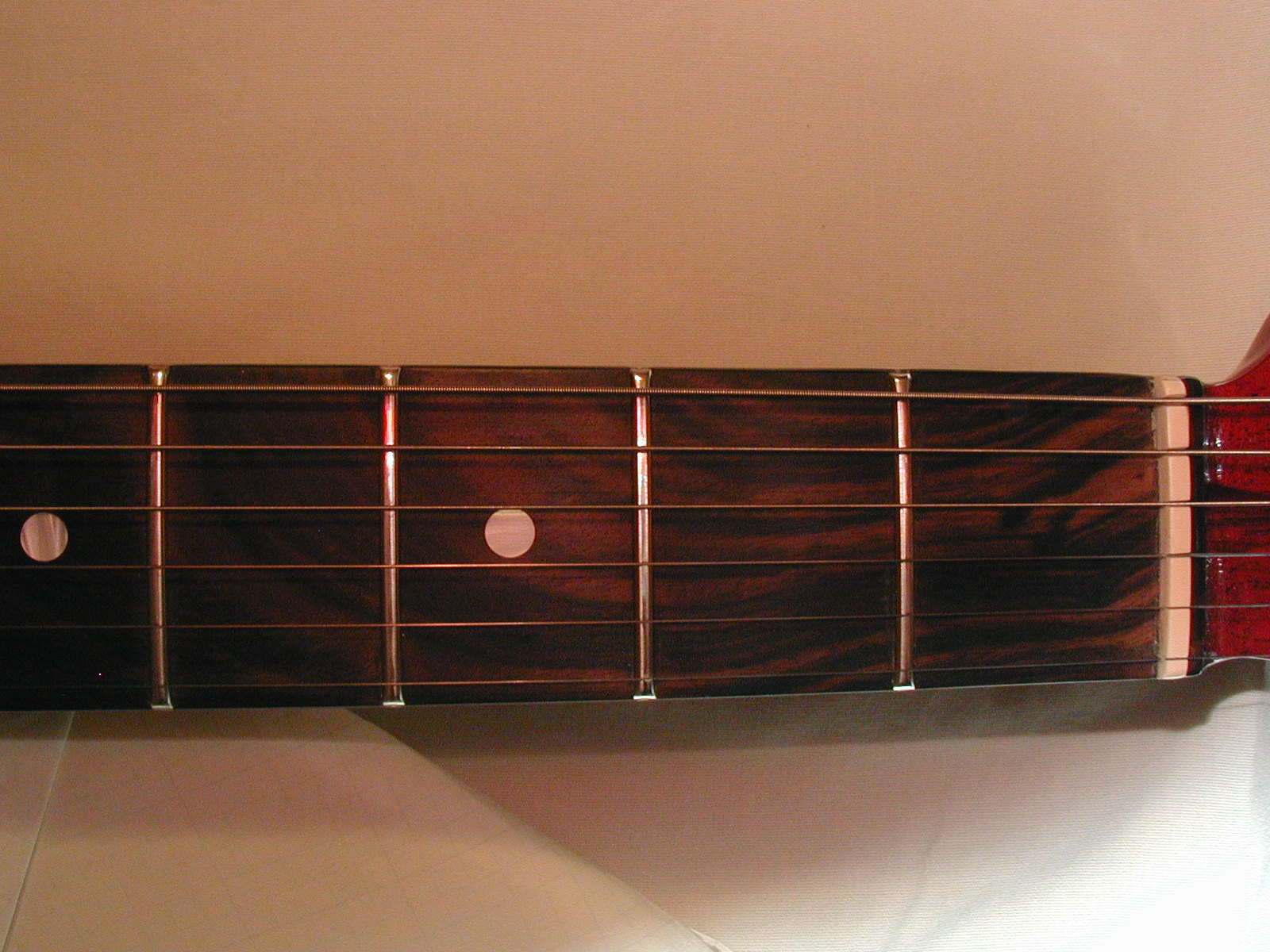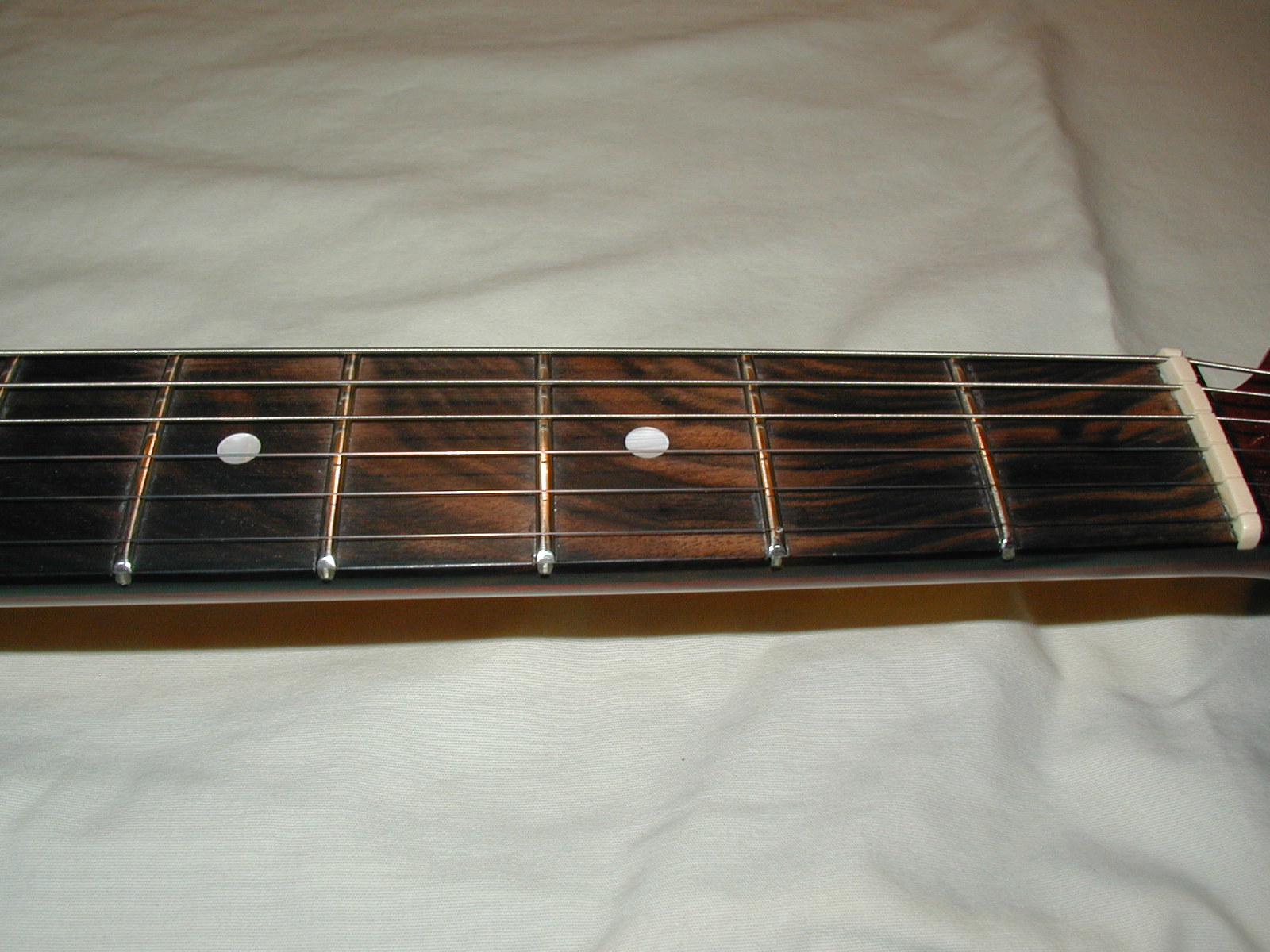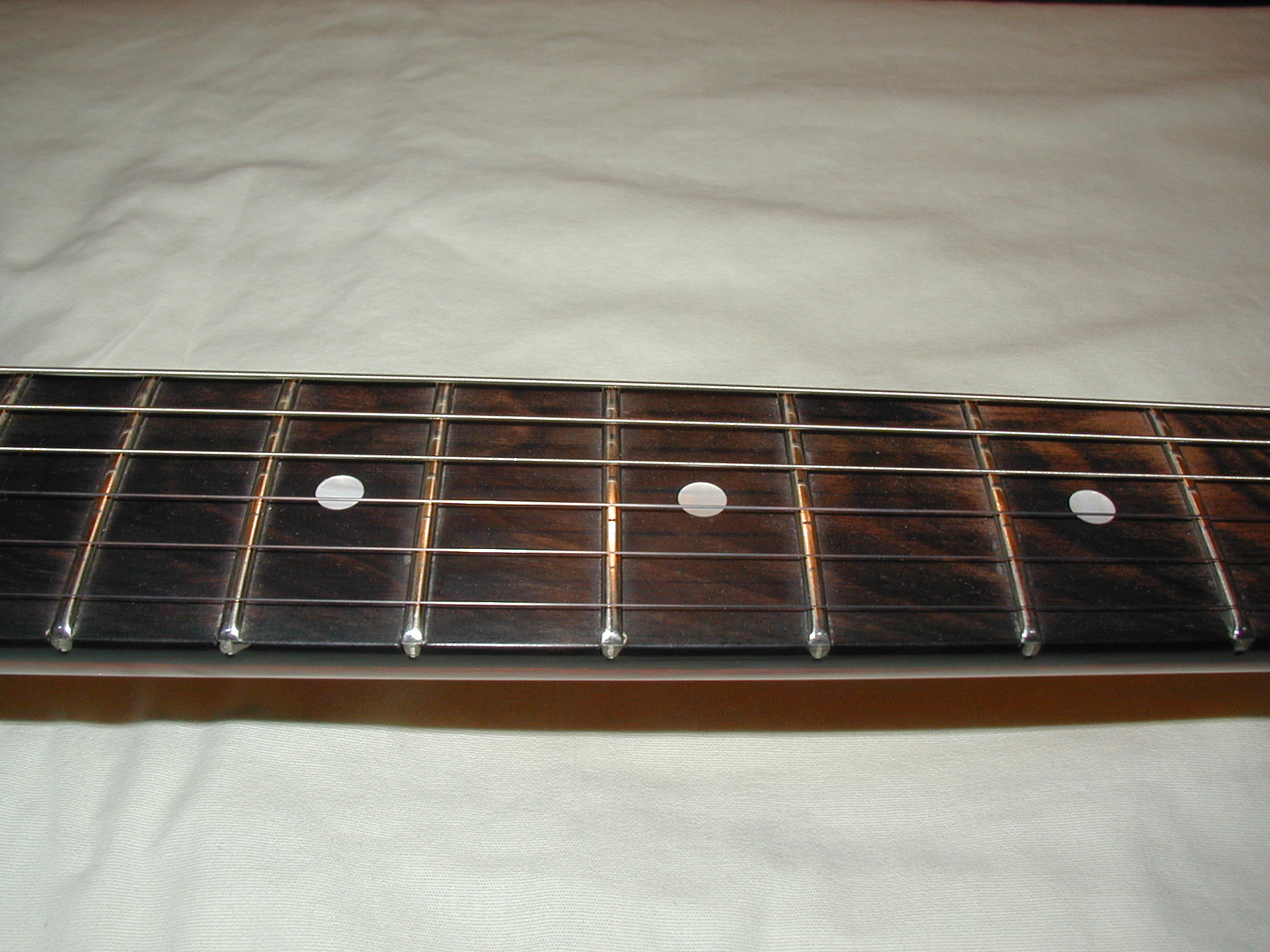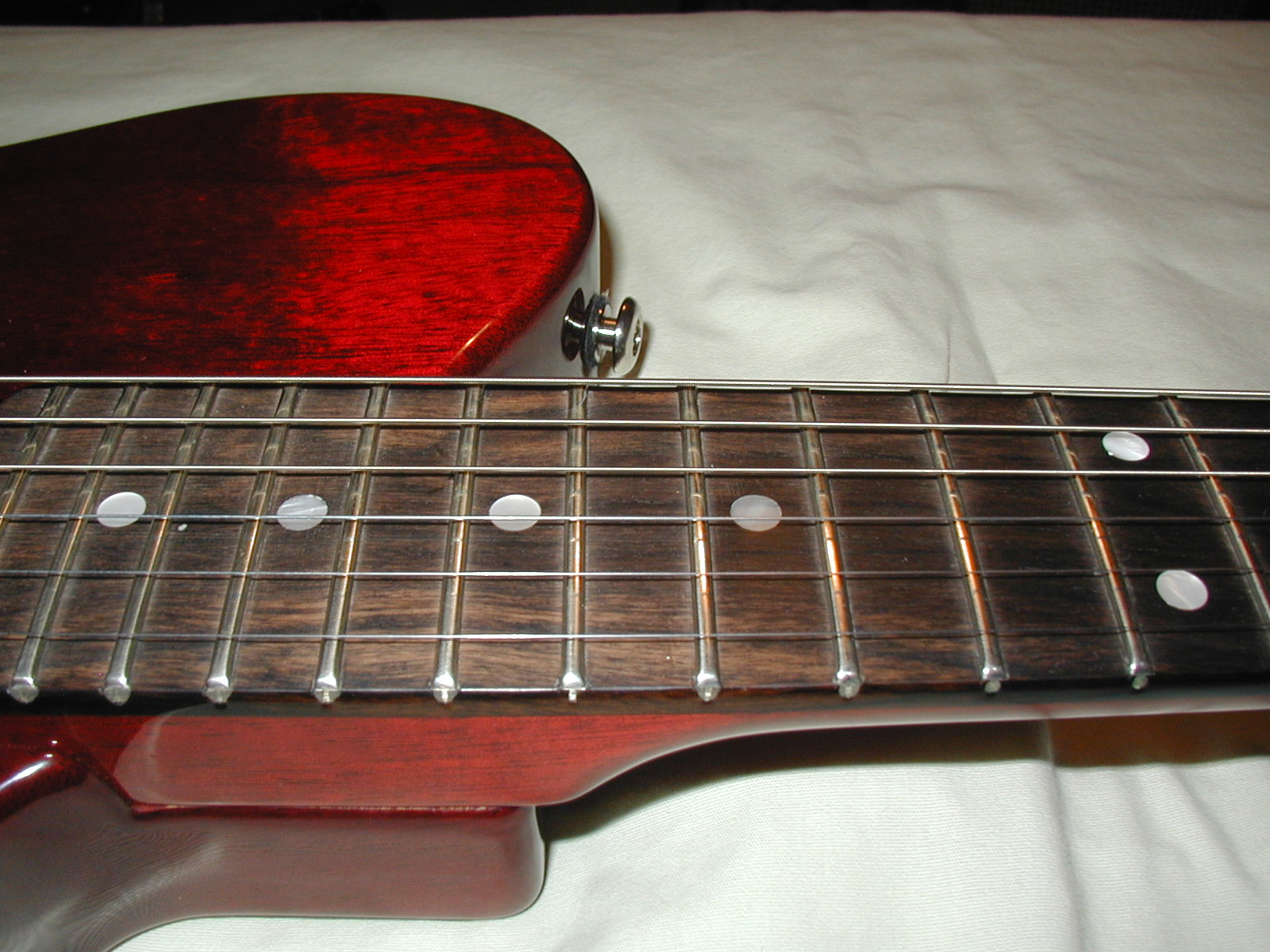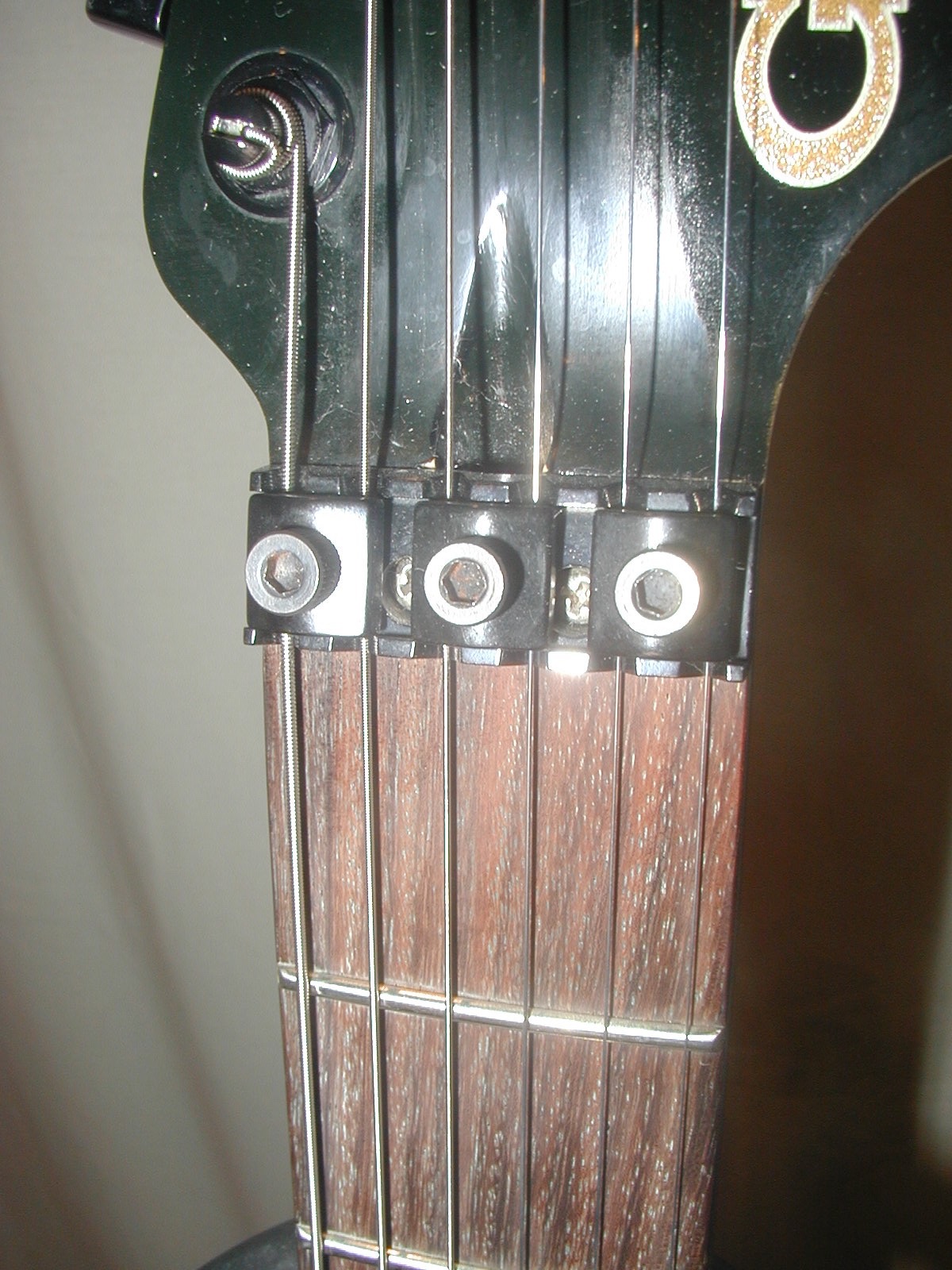Hi
yowhatsshakin wrote:Many times early G&Ls are registered with rosewood boards because the streaks in the unstained ebony throws them off.
Hi, thanks for weighing in.
I have always felt that the distinction between ebony and rosewood was essentially a no-brainer, because of the color and the deeper wood pores of rosewood. It was just the extreme oxidation condition of this particular board that made me question my initial assessment. Your "swirly" ebony is very distinctive and I've never seen that with rosewood.
Here we have the Ebony neck on the bass in question, and a rosewood brand F neck from 1964.

Most rosewood boards that I've seen have a more open grain than ebony, but this 1964 rosewood slab has fewer open wood pores than this 1980 ebony board, and to my eyes the portion of wood under lacquer above the nut look very similar on both of these basses. The ebony on this neck exhibits pretty straight grain, swirls would have given it away. Also the six or eight lemon oil treatments this ebony board has soaked up have closed up the grain some, at least to my eye. This was one very thirsty board.
You are of course correct that most or some of the early rosewood boards listed in the Registry are probably ebony. But some rosewood boards were made well before it was officially offered in the catalog, and I don't even know when that might have been. To me, this early 1980-1984 G&L period that Leo was changing some manufacturing specification every few months is most interesting.


